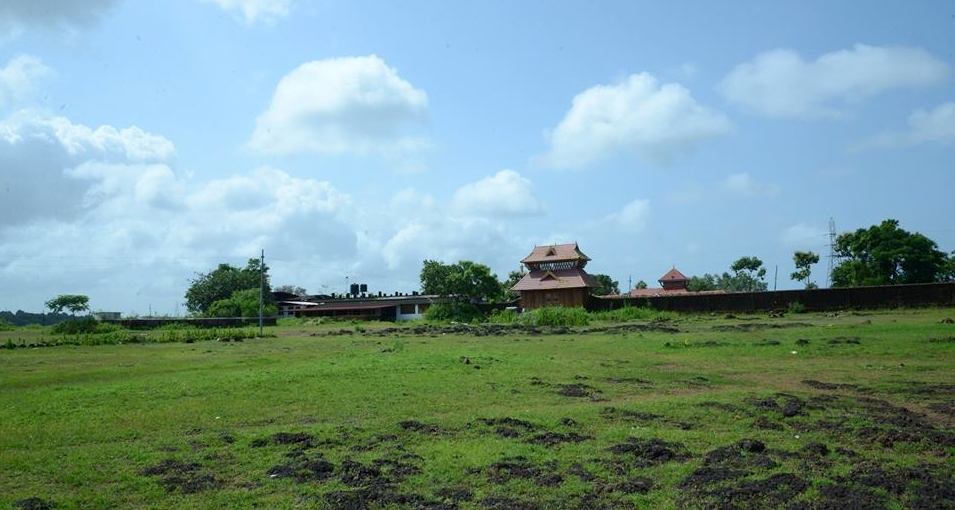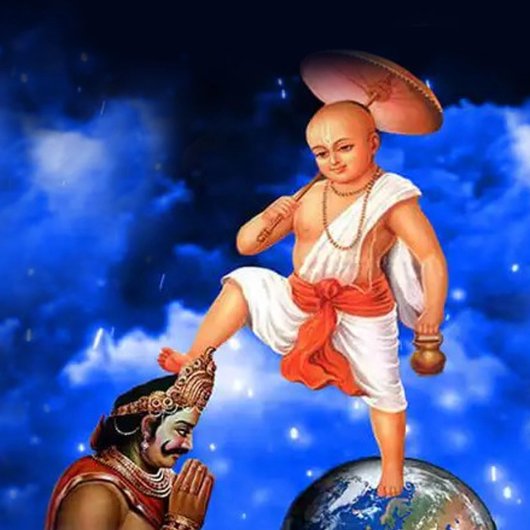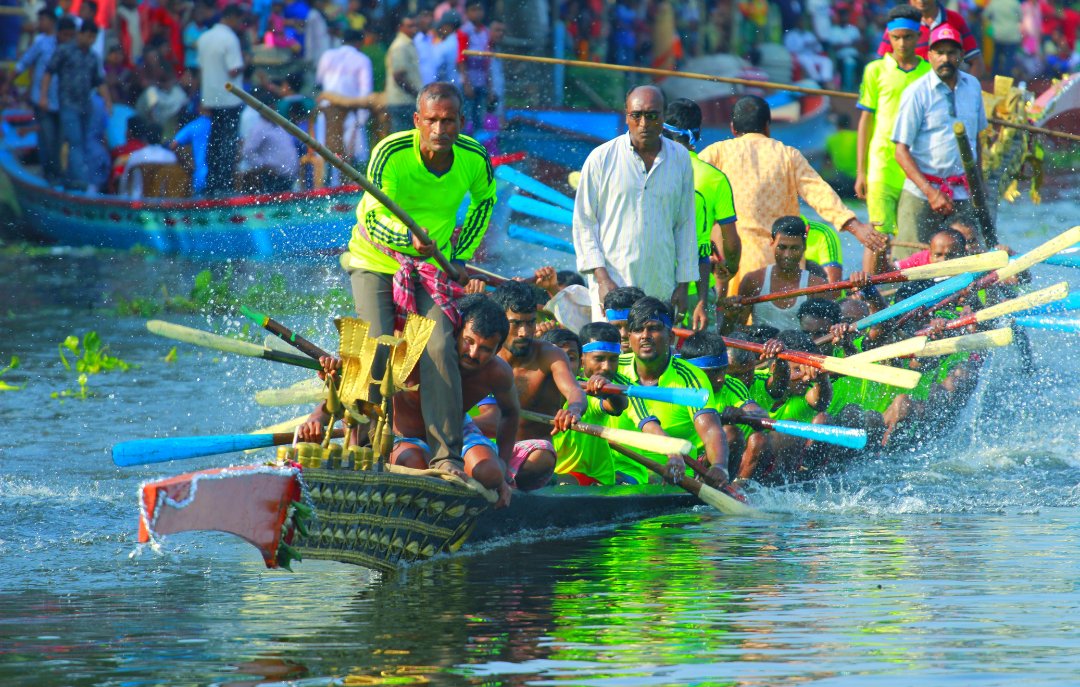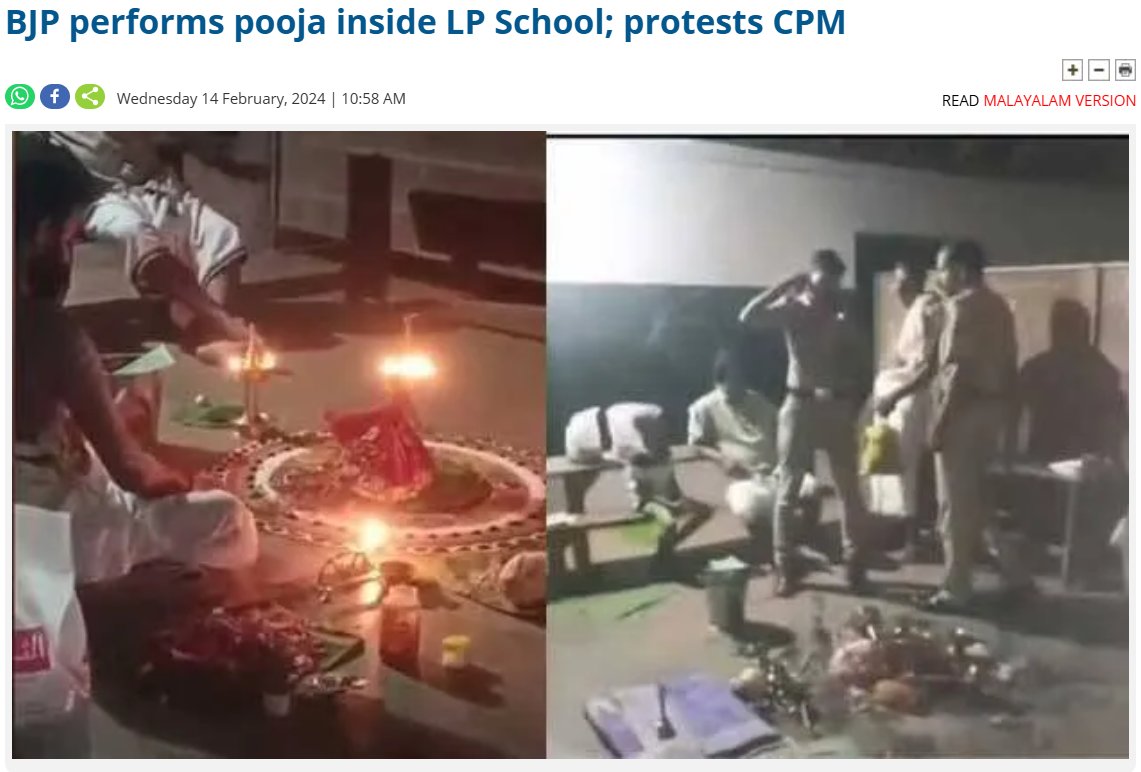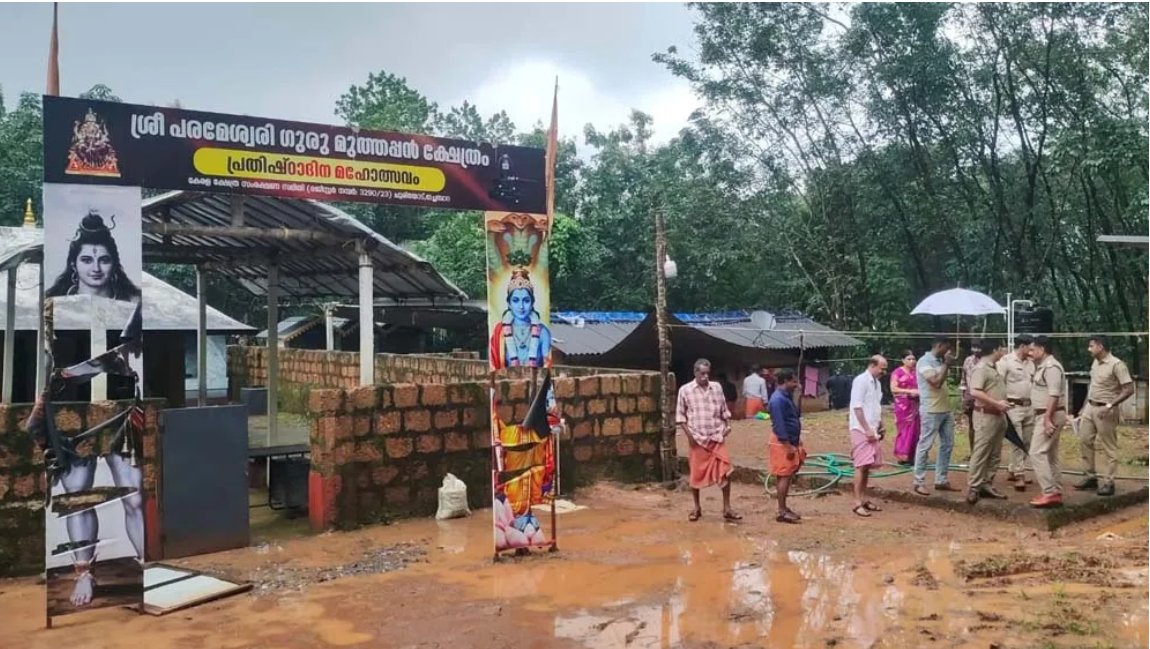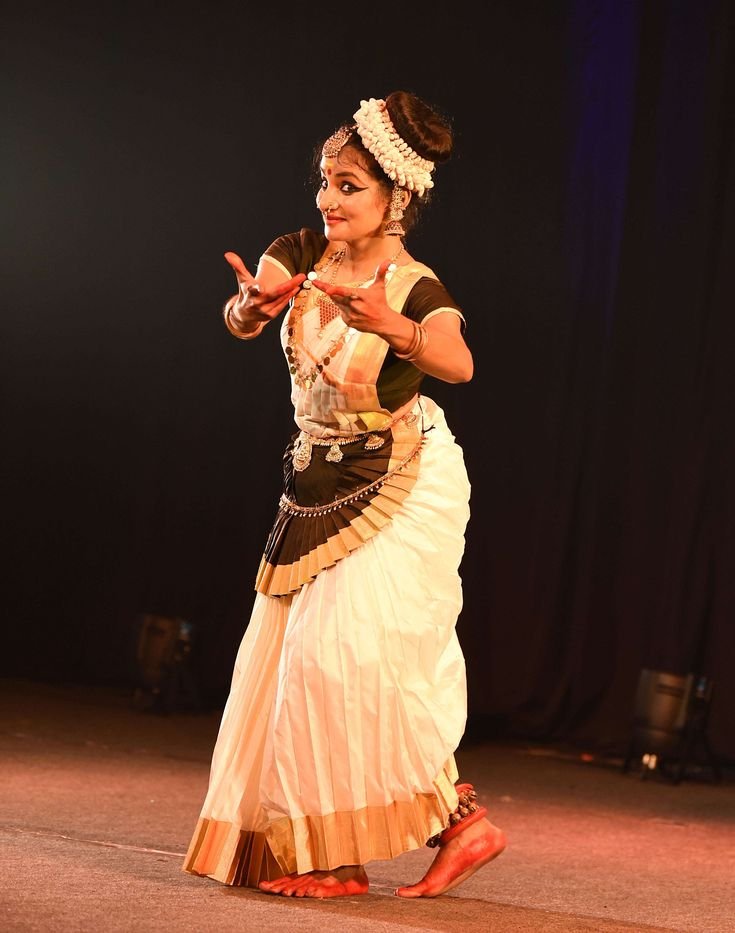Muslims and Christians in Kerala Temple festival committee: Have you heard of the popular Thirumandhamkunnu Bhagavathy temple in Malappuram district of Kerala?
#Communists #Kerala #temples #pooram #Malabar #keralamodel #secularism #sickularism #Hinduism #sanatani
1/21
#Communists #Kerala #temples #pooram #Malabar #keralamodel #secularism #sickularism #Hinduism #sanatani
1/21

The Pooram (temple festival) this year is to be held between April 11th- April 23rd, 2023. This is purportedly a list of the temple festival committee members. For those of you who can’t read Malayalam, let me list the names in the highlighted boxes.
#Communists #Kerala
2/21
#Communists #Kerala
2/21

1) Honorable MP Abdussamad Samadani (Indian Union Muslim League)
2) Ms. Rafeeqa (District Panchayat President)
3) Ms. Shaharban (District Panchayat Member)
4) Ms. Saeeda teacher
4) Mr. Abutahir
5) Mr. Manjalamkuzhi Ali MLA (Indian Union Muslim League)
6) Mr. Jose Varghese
3/21
2) Ms. Rafeeqa (District Panchayat President)
3) Ms. Shaharban (District Panchayat Member)
4) Ms. Saeeda teacher
4) Mr. Abutahir
5) Mr. Manjalamkuzhi Ali MLA (Indian Union Muslim League)
6) Mr. Jose Varghese
3/21
Considering the facts that this temple is managed by the Communist state government-controlled Malabar Devaswom Board, the demography of this district and the influence of the IUML (Muslim league) in Malappuram, most Hindus in Kerala wouldn’t be surprised to see this list.
4/21
4/21

About the temple: Thirumandhamkunnu Bhagavthy temple is one of the most ancient and prominent of the "Mahakshethras" of Kerala. This shrine which is among the most powerful Bhadrakali temples is located at Angadippuram in Malappuram district.
#Communists #Kerala #temples
5/21
#Communists #Kerala #temples
5/21

Legend: After ruling his kingdom for several years, King Mandhatha of the Surya dynasty decided to give up worldly pleasures in pursuit of spirituality and started meditating on Lord Shiva. Pleased with his penance, Siva appeared and offered him a boon.
#Kerala #temples
6/21
#Kerala #temples
6/21

The King asked Lord Shiva for a Shivalinga for him to worship until he left his body. Lord Siva granted his boon and gave him the most holy Shivalinga from Kailas which was too dear to Devi Parvathi and was worshipped by her. #keralamodel #secularism #sickularism #Hinduism
7/21
7/21

Carrying the Shivalinga on his head, King Mandhatha started his downward journey from Kailas and reached a hill which is known today as Thirumandhamkunnu. The king was drawn towards the beauty of the place which was surrounded by greenery and buzzing with birds and animals.
8/21
8/21

The king decided to take rest before proceeding further and lowered the Shivalinga from his head and laid it on the ground. The Shivalinga quickly became affixed to the ground.
#freekeralatemples #freeTNtemples @AmitShah #bjp4kerala #BJP4TN
9/21
#freekeralatemples #freeTNtemples @AmitShah #bjp4kerala #BJP4TN
9/21
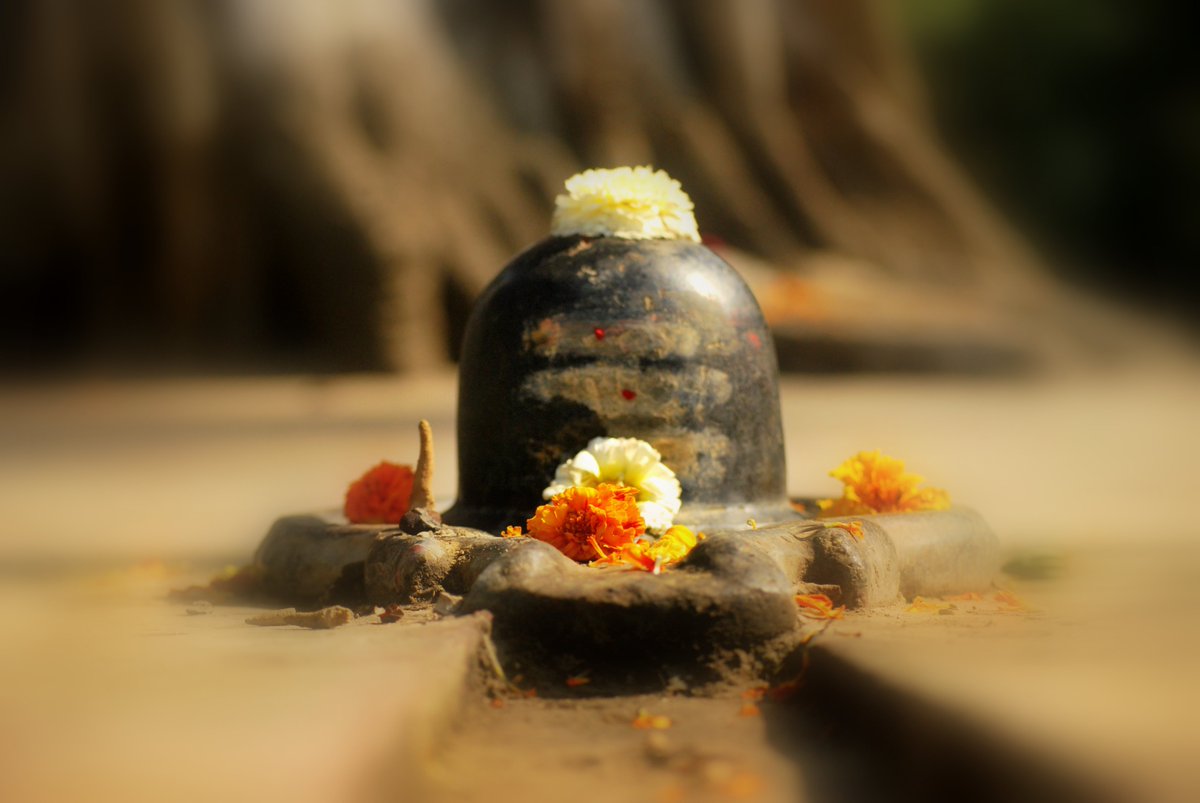
Meanwhile, Devi Parvathi turned up to worship the Shivalinga. On finding that the Linga was missing, she sent Bhadrakali and a host of Bhutas to retrieve the Shivalinga. Kali and the Ganas reached Thirumandhamkunnu. #HindusUnderAttack #Hinduism #keralamodel #sickularism
10/21
10/21
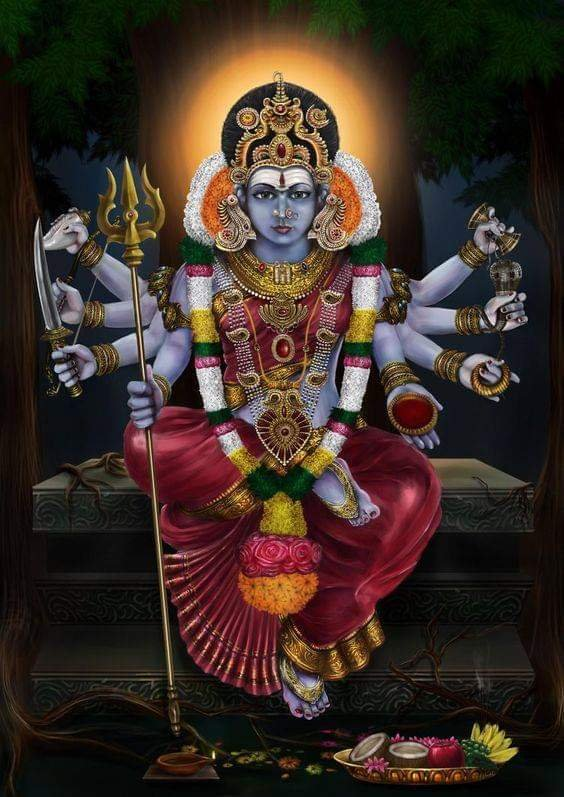
Due to the luminance of the Linga, they could not however proceed further and started throwing weapons in the direction of King Mandhatha from the foot of the hill.
#keralamodel #sickularism #KeralaNews #sanatani #Communism #freetemples #freekeralatemples
11/21
#keralamodel #sickularism #KeralaNews #sanatani #Communism #freetemples #freekeralatemples
11/21
The ascetics accompanying King Mandhatha were unarmed and they started throwing "Attanga" nuts (walnuts) back which were available in abundance in the area. These nuts turned into arrows due to the ascetic powers of Mandhatha. It is said that this fight lasted for 15 days.
12/21
12/21
To commemorate this legendary fight between Mandhatha and Kali, there is still an age-old custom of “Attanga yeru” (throwing of walnuts) on the first day of the Malayalam month of Thulam.
13/21
13/21

Eventually Mahamaya (Goddess) took her Vishwaroopa and tried to seize the Linga forcefully. In the struggle that followed, the Linga got split into two and the Tri murtis – Brahma, Vishnu and Shiva appeared along with Devi Parvathi.
14/21
14/21
Parvathi told Mandhatha that although the Linga is dear to her, she wouldn’t take it away from Mandhatha against the wishes of her husband, Lord Shiva. She said that she would enter the Linga and remain there forever. The Shivalinga here is still in a split condition.
15/21
15/21

Temple Rituals: The Siva Linga installed at 'Sreemoolasthanam' at Thirumandhamkunnu Temple has all divinities according to Vedamanthras. In addition, it has the presence of deva divinity, rishi divinity and human divinity. It is therefore supreme in all respects.
16/21
16/21

Having been first worshipped daily by SreeParvathy, subsequently by Rishi Mandhatha for a long time and then by two holy Deva like Brahmins, in accordance with the instructions of Rishi Mandhatha codified in a Grandha, the Linga has a Chaitanya (vibrance) like none other.
17/21
17/21
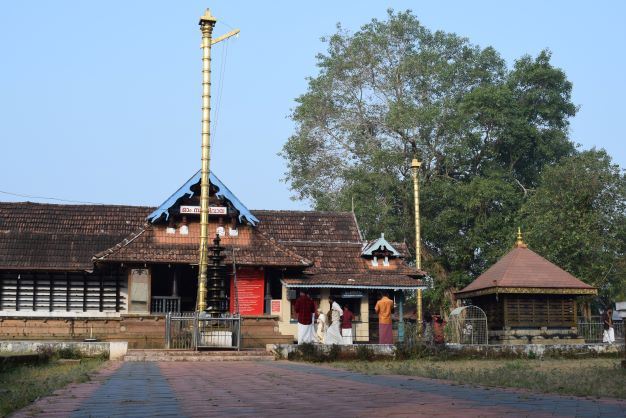
It is believed that Parvathy, Parameswaran and Durga- the three divinities are ever present in this idol.
#HindusUnderAttack #Hinduism #keralamodel #sickularism #KeralaNews #sanatani #Communism #freetemples #freekeralatemples #freeTNtemples @AmitShah #bjp4kerala #BJP4TN
18/21
#HindusUnderAttack #Hinduism #keralamodel #sickularism #KeralaNews #sanatani #Communism #freetemples #freekeralatemples #freeTNtemples @AmitShah #bjp4kerala #BJP4TN
18/21
It is distressing that temples with powerful energy spaces are slipping away from Kerala Hindus. The role played by these energy spaces in withstanding invasions and other attacks on Hinduism can never be undermined.
#HindusUnderAttack #Hinduism #keralamodel #sickularism
19/21
#HindusUnderAttack #Hinduism #keralamodel #sickularism
19/21
Once these energy spaces disappear, disappearance of Hindu culture would only be a matter of time. We have many examples in our country and in our neighborhood to demonstrate this. It is true that Kerala is in the control of communists.
#Hinduism #HindusUnderAttack
20/21
#Hinduism #HindusUnderAttack
20/21

However, there is still a very strong Hindu community living in the state and this community looks up to the central government to do something urgently to free temples from state government control, and to give it back to the Hindus before it is too late.
@narendramodi
21/21
@narendramodi
21/21

Addition to the thread (Adding a name missed out earlier)
1) MP Abdussamad Samadani
2) Ms. Rafeeqa
3) Ms. Shaharban
4) Ms. Saeeda teacher
5) Mr. Abutahir
6) Mr. Manjalamkuzhi Ali MLA
7) Ms Saleela
8) Mr. Jose Varghese
Non-Hindus in the temple festival committee - 8
1) MP Abdussamad Samadani
2) Ms. Rafeeqa
3) Ms. Shaharban
4) Ms. Saeeda teacher
5) Mr. Abutahir
6) Mr. Manjalamkuzhi Ali MLA
7) Ms Saleela
8) Mr. Jose Varghese
Non-Hindus in the temple festival committee - 8

Addition to the thread:
This is Thirumandhaamkunnu temple, Kerala painted as part of the temple festival. I wonder if it's the Waqf board that's handling the temple now 🤔
#Malabar #Kerala #savekeralatemples #freekeralatemples @narendramodi @AmitShah
This is Thirumandhaamkunnu temple, Kerala painted as part of the temple festival. I wonder if it's the Waqf board that's handling the temple now 🤔
#Malabar #Kerala #savekeralatemples #freekeralatemples @narendramodi @AmitShah

Update:
After protests from devotees since yesterday, repainting happened today to change/remove the green paint. Temple festival chairman is still the Muslim league MLA Ali! All of this give one the impression that they are testing the waters! #kerala #KeralaNews #temples
After protests from devotees since yesterday, repainting happened today to change/remove the green paint. Temple festival chairman is still the Muslim league MLA Ali! All of this give one the impression that they are testing the waters! #kerala #KeralaNews #temples

• • •
Missing some Tweet in this thread? You can try to
force a refresh





